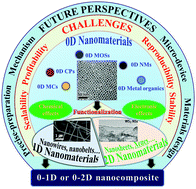Recent advances in 0D nanostructure-functionalized low-dimensional nanomaterials for chemiresistive gas sensors
Abstract
The previous decades have witnessed increasing prevalence of research on chemiresistive gas sensors due to their high response, simple configuration and low cost. Chemiresistive gas sensors based on low-dimensional (0D, 1D and 2D) nanomaterials are remarkable because their high specific areas, abundant active sites and quantum effects in a certain dimension endow them with extraordinary gas sensing performance. Additionally, it has been gradually demonstrated that fabricating nanocomposites from various low-dimensional nanomaterials can further improve their sensing performance. The nanocomposites are generally in the form of 0D nanostructure-functionalized 1D or 2D nanomaterials. This review aims to elaborate the functionalization of 0D nanomaterials, including metal oxide semiconductors (MOSs), noble metals (NMs), metal chalcogenides (MCs), metal organics, conductive polymers (CPs) and others, on various 1D or 2D backbone nanomaterials. The content includes methods for depositing 0D nanomaterials on 1D or 2D backbones as well as the gas sensing performance and underlying mechanisms of 0D–1D and 0D–2D nanocomposites.



 Please wait while we load your content...
Please wait while we load your content...